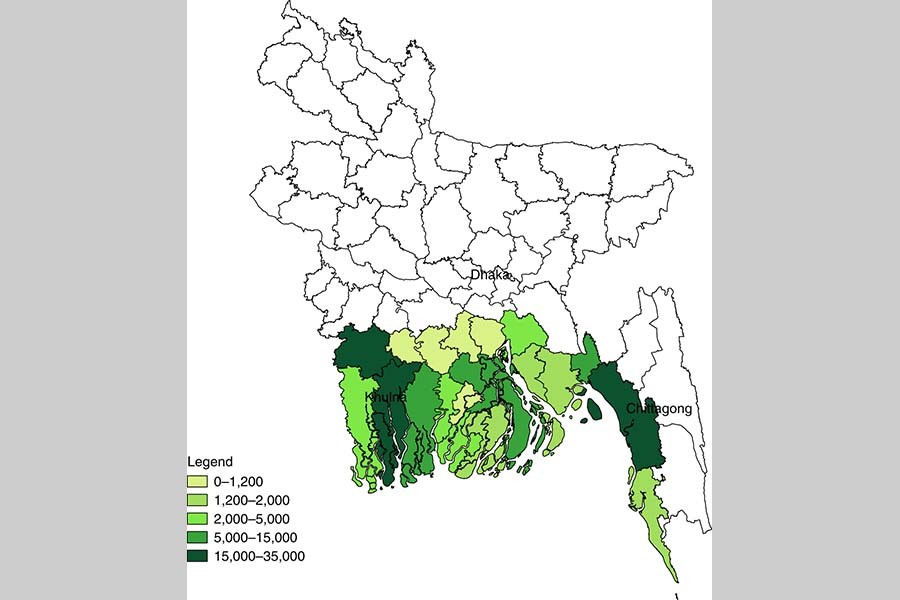That submergence of coastal areas following sea-level rise has long been predicted but how it will trigger internal migration has not been studied systematically. A study under the title 'Coastal Climate Change, Soil Salinity and Human Migration in Bangladesh' carried in collaboration with the International Food Policy Research Institute (IPFRI) and the Ohio State University claims that it has examined 'a complex link between flooding, soil salinity, rural livelihoods and migration as well as the probable adaptation strategies'. The claim made is tall indeed, because the study is categorical that it is the first of its kind. Intrusion of saline seawater has already affected vast areas in the Khulna-Bagerhat region and with the rise of the sea level, salinity is likely to make further inroads into inland. Even a layman can realise this. The in-depth study has tried to determine the impact on the basis of moderate to the highest salinity invasion.
Well, the study has thus predicted displacement of 0.20 million coastal people a year if the salinity is at its worst. If such a large number of people are compelled to move out of their homes, it is really a cause for serious concern. Surely, they are not likely to be affected all on a sudden unless it is a hurricane or storm that sweeps the area. If sea-level rise and consequent increase in salinity are responsible for their internal migration, it will happen over the years. Now how much area will get affected by saline water and for how long a period will determine the process and length of people's displacement. Also the extent of submergence will be strong determinant here. No technology has been developed yet to obviate the process. Surely Bangladesh is heading for a calamity of outsize proportion.
The study has focused on the livelihood options. A shift from crop production to aquaculture has already taken place. Whether the study has gone deeper in to the social dynamics of friction and tension between the small farmers and owners of shrimp enclosure is yet to be known. Climate-induced natural process of migration has been further exacerbated by these social sharks whose muscle power has been responsible for untimely infiltration of salinity in lands from which small but genuine farmers were driven out.
What is galling is that the study has found a positive impact of aquaculture on the ground, as it claims, that it employs more people than crop cultivation. Is it so? Agriculture was the mainstay of the farmers of the coastal region under study. Also the study finds that the earning from moderately saline-infected agriculture declines by 21 per cent each year. The number of affected farmers compared to those taking to aquaculture is far greater and if they are to leave their ancestral homes, its social and economic costs will be enormous, no doubt. A relocation and rehabilitation strategy is in order. Their migration to urban centres, particularly the large cities will force them to change their livelihoods as it happens in case of landless poor people.


